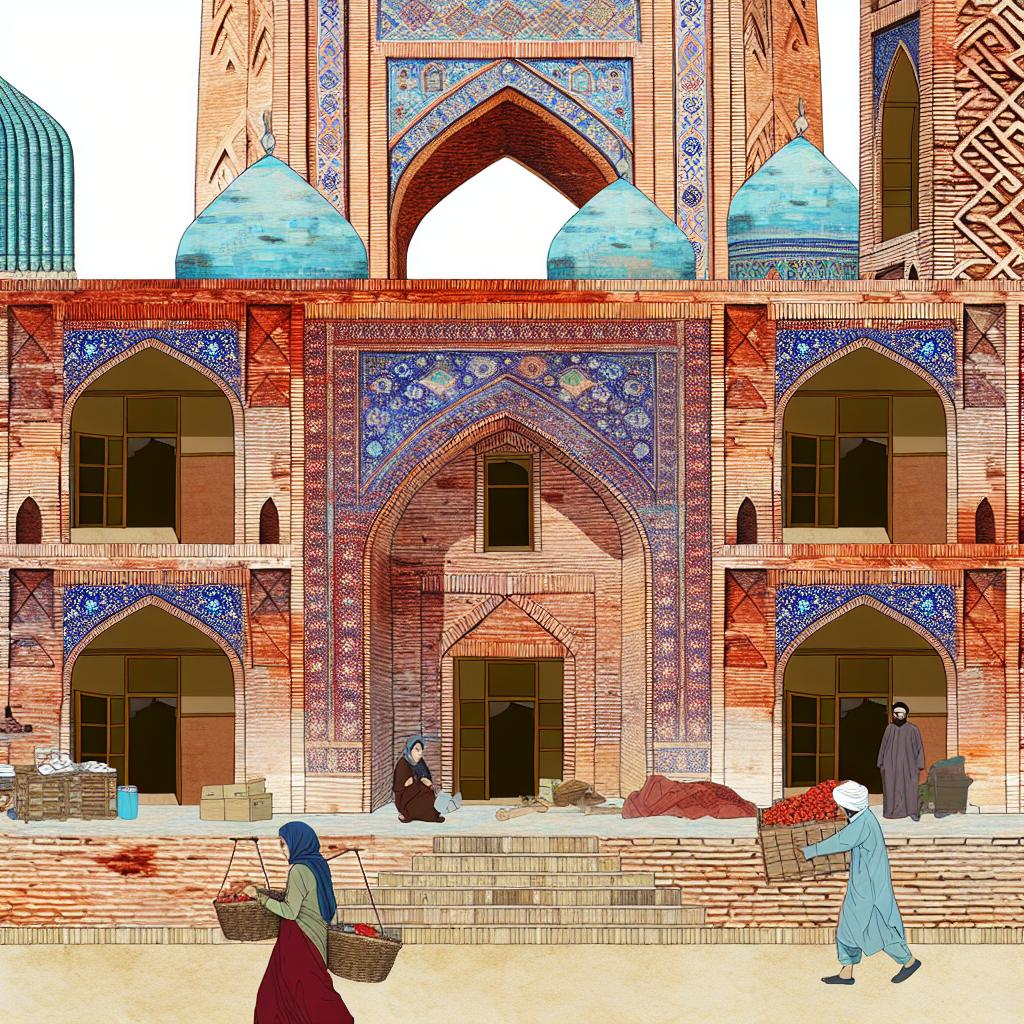Contents
Introduction
The Samarkand Registan Residences, an architectural marvel, stand as an epitome of medieval Islamic architecture. This marvel is situated in the heart of Samarkand, Uzbekistan, a city that boasts a rich tapestry of history and culture. These historical edifices are recognized not only for their intricate designs but also for their profound cultural value and historical significance. The Registan Residences are vital in understanding the heritage and historical context of the region. Their grandeur offers valuable insight into the Islamic world during the era of the Timurid Empire.
Historical Significance
The history of the Samarkand Registan Residences can be traced back to the 15th century, a dynamic period characterized by the rule of the Timurid dynasty. This era was notable for its cultural renaissance, which left an indelible mark on art, architecture, and science throughout the region. The Residences were erected as part of a more extensive complex that included other significant structures such as mosques, madrassas, and mausoleums. The structures are emblematic of the architectural brilliance that was prevalent during this era. The intricate tile work and grandiose facades are reminiscent of the sophistication and mastery of architecture that were hallmarks of that period.
At the peak of its grandeur, this complex would have played a central role in the socio-cultural landscape of Samarkand. As a vibrant center of power and cultural exchange, the Samarkand Registan Residences symbolized the architectural and cultural aspirations of the Timurid dynasty. The structures housed within the complex were meticulously designed to reflect the empire’s grandeur and incorporate rich artistry, culminating in a space that was both spiritually and culturally enriching.
Architectural Features
Architecturally, the Samarkand Registan Residences are celebrated for their stunning mosaic tiles, beautiful majolica, and exquisitely carved marble. These features are indicative of the technical skill and artistic innovation of the time. The color palette employed in the design frequently highlights deep blue tones, which are artistically counterbalanced with gold, creating an awe-inspiring visual spectacle. This distinctive use of color and detail exemplifies the intricate art forms that are characteristic of Islamic architecture.
Every element of the design carries with it deep symbolic meaning. Geometric patterns are utilized to reflect the notion of infinity and unity associated with Allah, while the arabesques manifest the interconnected nature of life. These patterns and motifs are not merely decorative but also serve as visual sermons, imparting philosophical and religious ideals that were integral to the society that conceived them. Such detailing introduces a spiritual dimension to the architecture, making each structure a reflection of cultural beliefs and theological doctrines.
Cultural Impact
The cultural impact of the Registan Residences transcends their extraordinary architectural beauty. These structures historically served as dynamic hubs of education, housing several renowned madrassas. These centers of learning attracted a diverse body of scholars from all corners of the Islamic world. The dissemination of advanced knowledge in various fields such as mathematics, astronomy, and philosophy from these institutions played a crucial role in bolstering the intellectual flourishing characteristic of the Islamic Golden Age.
This era of immense scholarly activity and exchange aided in the cross-fertilization of ideas, fostering advancements that influenced both the Islamic world and Western Europe. As wellsprings of knowledge and learning, the Registan Residences facilitated an intellectual environment that spearheaded developments in numerous disciplines. The fact that they attracted scholars globally attests to the prominent role they played in shaping the intellectual discourse of the time.
Modern-Day Relevance
In contemporary times, the Residences continue to stand as enduring testaments to a gloriously rich past. They have become a focal point for cultural and historical tourism in Uzbekistan, drawing countless visitors eager to experience their storied legacy firsthand. Preservation efforts are actively pursued to maintain these historical buildings’ structural integrity and ensure their legacy is sustained for future generations.
Understanding and appreciating the cultural heritage represented by the Samarkand Registan Residences is crucial in global efforts aimed at preserving and celebrating historical sites worldwide. As we continue to unravel the layers of history embedded within these edifices, they not only serve as reminders of our shared past but also as inspiration for future endeavors in cultural and historical conservation. For those interested in exploring the significance of preserving such sites, additional reading can be found on platforms like UNESCO’s official website. This provides a more comprehensive understanding of global preservation efforts and the value of maintaining these cultural treasures for posterity.

